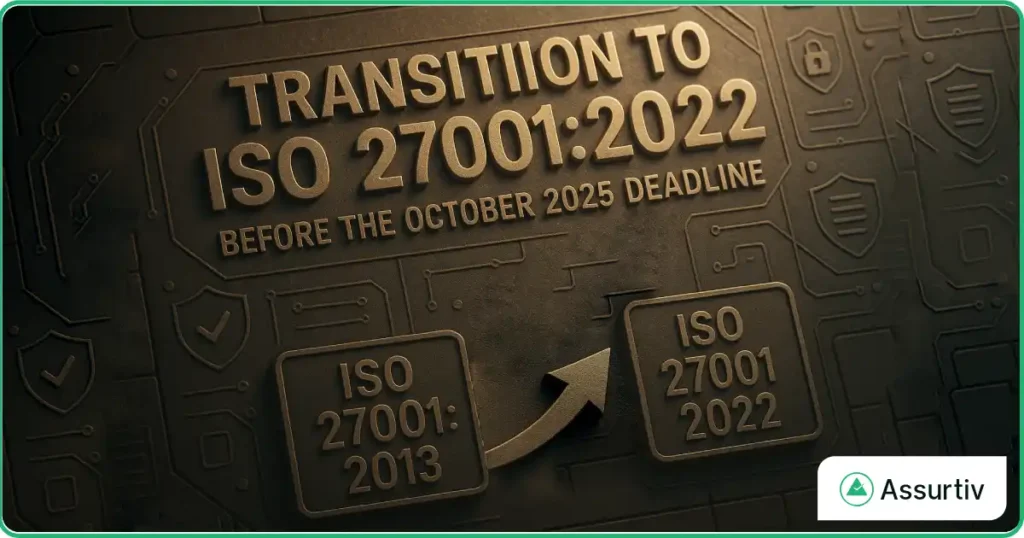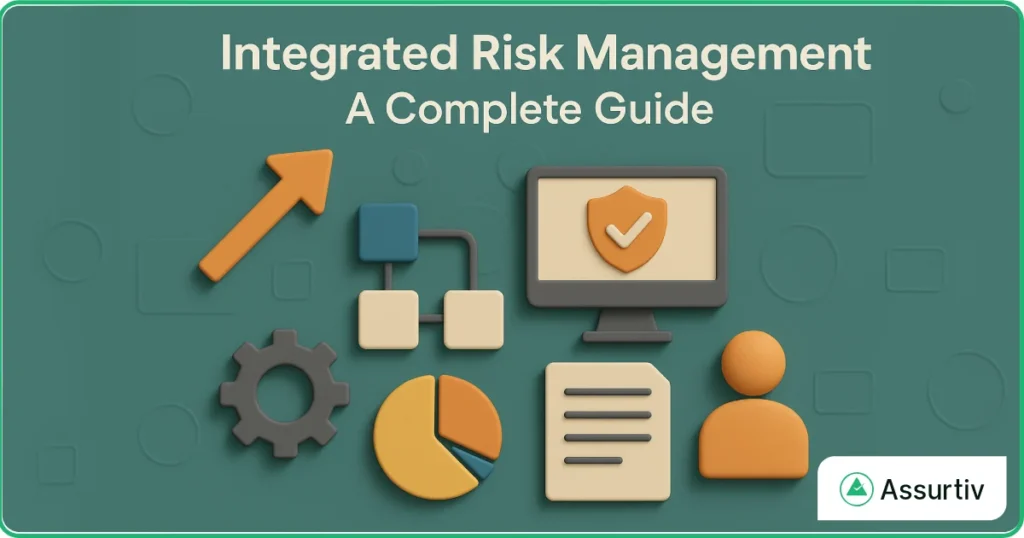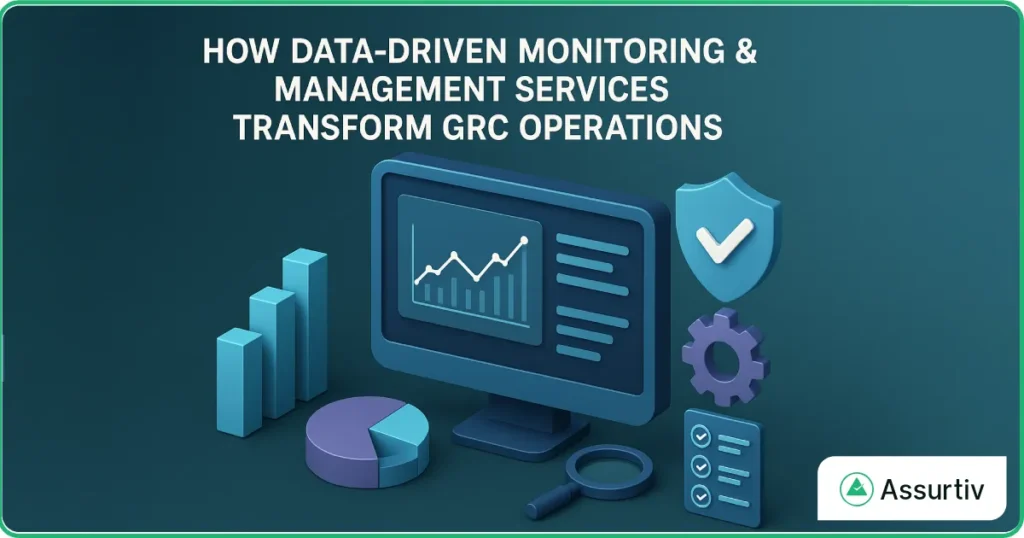ISO 27001:2013 to ISO 27001:2022 – Transition Before the October 2025 Deadline
3 Oct 2025
The ISO/IEC 27001:2013 standard has been the cornerstone of Information Security Management Systems (ISMS) for over a decade. But with evolving cybersecurity risks, cloud adoption, and new privacy challenges, the standard was updated in 2022.
Organizations certified to ISO 27001:2013 must transition to ISO 27001:2022 by October 31, 2025, as certifications to the 2013 version will no longer be valid. This makes the transition both urgent and essential for maintaining compliance and protecting customer trust.
At Assurtiv, we help organizations simplify this journey by providing a modern GRC platform designed to map, manage, and monitor every step of the transition.
Why the ISO 27001:2022 Transition is Required
- Updated Security Landscape: The ISO 27001:2022 version addresses today’s realities—cyber threats, cloud services, operational resilience, and privacy considerations.
- Relevance: Aligns organizations with current best practices and emerging technologies to build resilience.
- Compliance Requirement: A transition audit is mandatory. Without it, organizations risk losing ISO 27001 certification after October 2025.
What ISO 27001:2022 Transition Involves
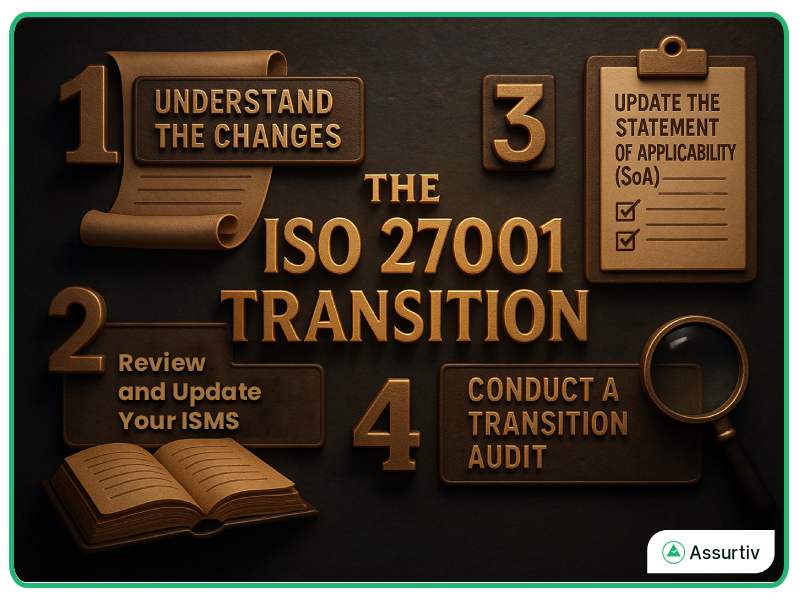
Understand the Changes
Annex A controls have been restructured into four themes: Organizational, People, Physical, and Technological, reduced from 114 to 93 controls. New controls include Threat Intelligence, Cloud Services Security, and ICT Readiness for Disruption.
The restructuring includes:
- 11 new controls
- 24 merged controls (combined from 56 in 2013 to 24 in 2022)
- 58 updated controls (renamed, restructured, or with enhanced guidance)
- Controls deleted or absorbed (no longer standalone, but addressed through merged or updated controls)
The 11 New Controls in ISO 27001:2022
These controls reflect modern risks such as cloud adoption, DevSecOps, resilience, and data privacy.
- A.5.7 – Threat Intelligence – Use intelligence to anticipate and respond to cyber threats.
- A.5.23 – Information Security for Use of Cloud Services – Secure selection and management of cloud providers.
- A.5.30 – ICT Readiness for Business Continuity – Ensure IT systems support resilience and recovery.
- A.7.4 – Physical Security Monitoring – Monitor premises via CCTV, sensors, or equivalent safeguards.
- A.8.9 – Configuration Management – Establish secure baselines and maintain configurations.
- A.8.10 – Information Deletion – Secure removal of sensitive information when no longer needed.
- A.8.11 – Data Masking – Reduce exposure of sensitive data through masking or obfuscation.
- A.8.12 – Data Leakage Prevention – Prevent unauthorized disclosure of sensitive data.
- A.8.16 – Monitoring Activities – Strengthen proactive monitoring of systems and events.
- A.8.23 – Web Filtering – Control and restrict access to harmful or unapproved sites.
- A.8.28 – Secure Coding – Embed security into development processes and code practices.
Review and Update Your ISMS
Conduct a gap analysis of your current ISMS against the new 2022 requirements.
Update the Statement of Applicability (SoA)
Reflect the revised Annex A controls and document how your organization addresses each of them.
Conduct a Transition Audit
Accredited certification bodies will verify that your ISMS aligns with ISO 27001:2022.
How Assurtiv Simplifies ISO 27001 Transition
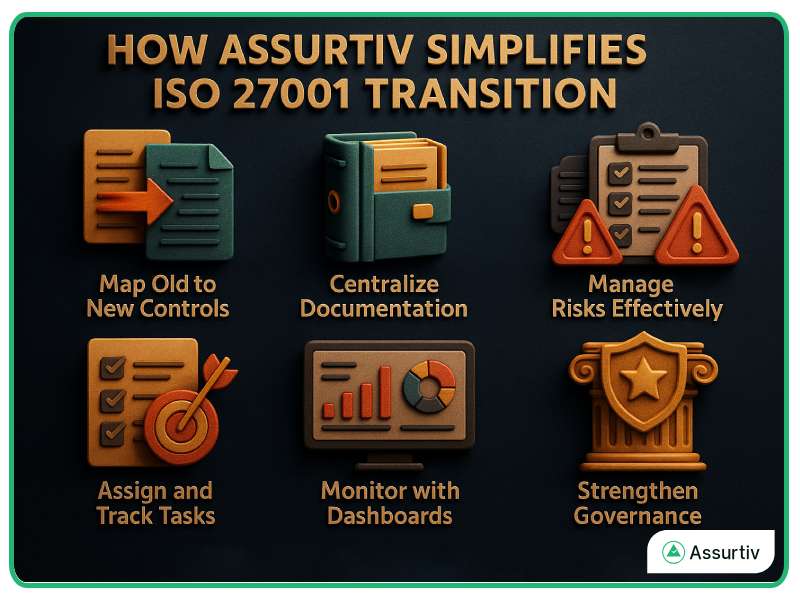
Traditional compliance approaches – spreadsheets, manual mapping, scattered documentation – create delays and increase audit risks. Assurtiv replaces these with a single, centralized GRC platform designed for agility, scalability and accountability.
With Assurtiv, you can:
- Map Old to New Controls: Built-in structure to transition from ISO 27001:2013 Annex A to the 2022 framework seamlessly.
- Centralize Documentation: Store policies, ISMS updates, and evidence in one place for audit readiness.
- Manage Risks Effectively: Align your risk register with the new requirements and demonstrate proactive treatment.
- Assign and Track Tasks: Use our project and task management modules to delegate responsibilities and monitor progress.
- Monitor with Dashboards: Real-time notifications and reports keep leadership informed of transition status.
- Strengthen Governance: Clearly define accountability with organizational role mapping and RACI frameworks.
Result: Organizations cut transition time by 40–60%, reduce audit stress, and stay on top of compliance.
Want to see how ready you are for ISO 27001:2022? Register now to get our Readiness Checklist and receive a FREE Gap Assessment straight to your inbox!
ISO 27001:2022 Transition Deadline to Remember
The deadline is absolute: after 31 October 2025, all 2013 certificates become invalid. Every day of delay increases the risk of compliance gaps, failed audits, lost contracts, and weakened customer trust.
Failing to transition in time risks:
- Certification lapse
- Vendor assessment failures
- Loss of business and customer trust
Conclusion
The ISO 27001:2022 transition isn’t just about compliance, it’s about building resilience against today’s cybersecurity challenges. Organizations that act now will not only maintain certification but also strengthen trust with customers and partners.
At Assurtiv, we transform what could be a complex, manual, and high-risk project into a streamlined, automated, and audit-ready journey. Our platform not only accelerates your transition but ensures that your ISMS becomes a living framework for governance, risk, and compliance. With built-in mappings, evidence registers, and real-time dashboards, you move from uncertainty to audit-ready in a fraction of the time.
Start your ISO 27001:2022 journey with Assurtiv. Book a demo today and witness, how we help organizations simplify this journey by providing a modern GRC platform designed to map, manage, and monitor every step of the transition.


